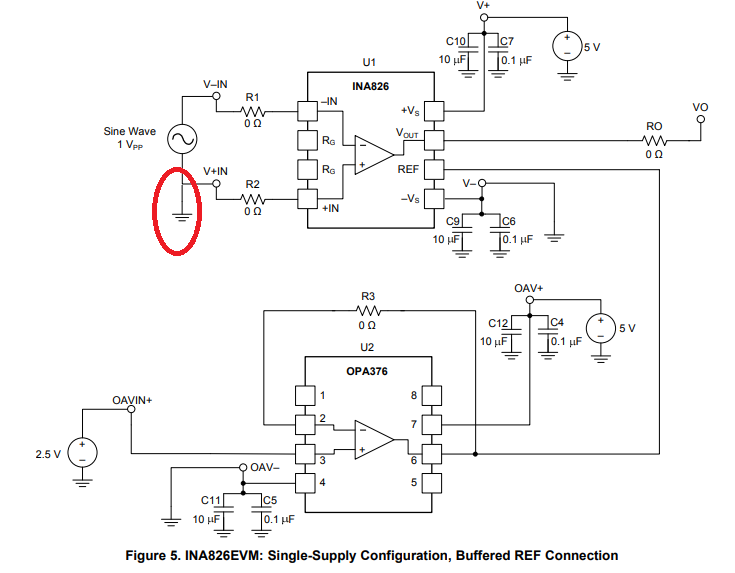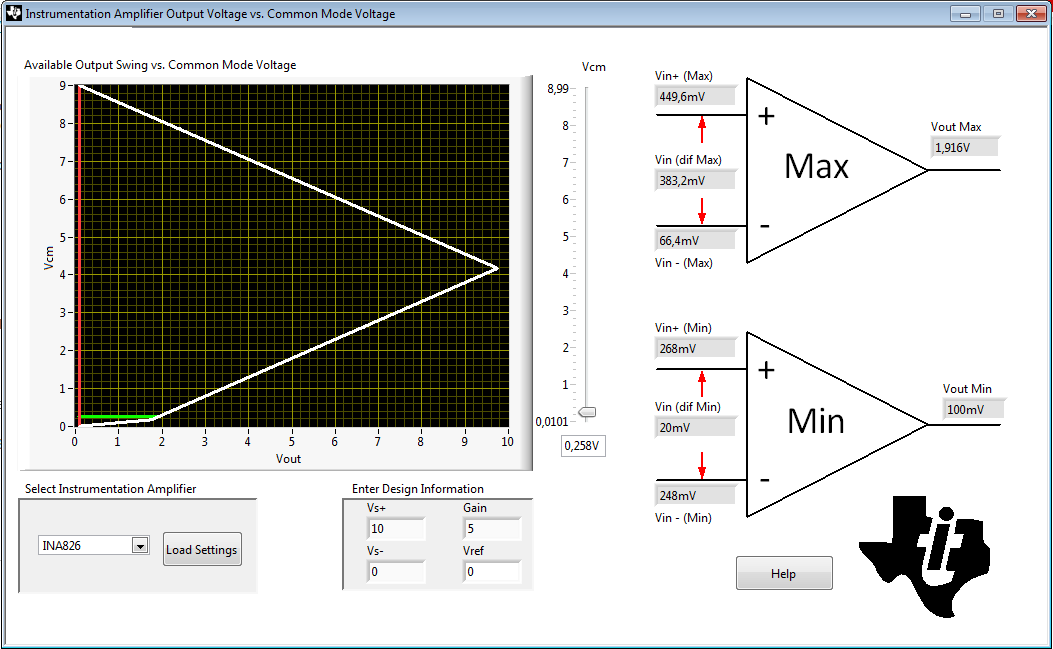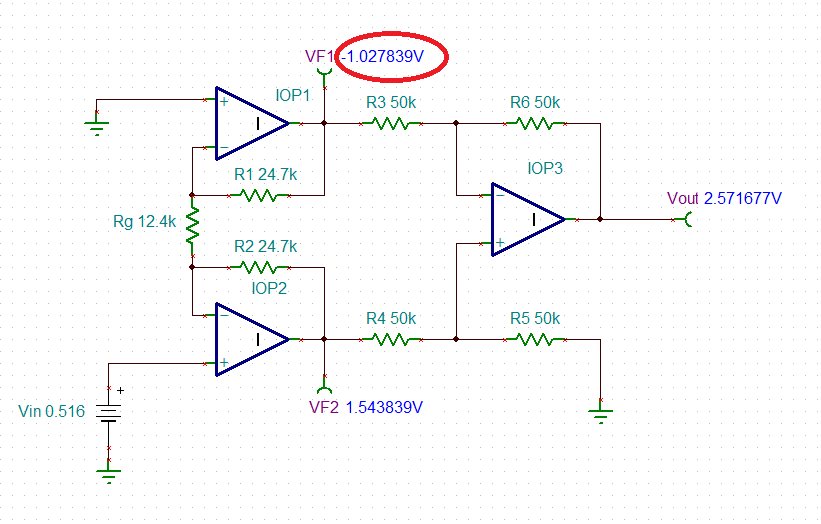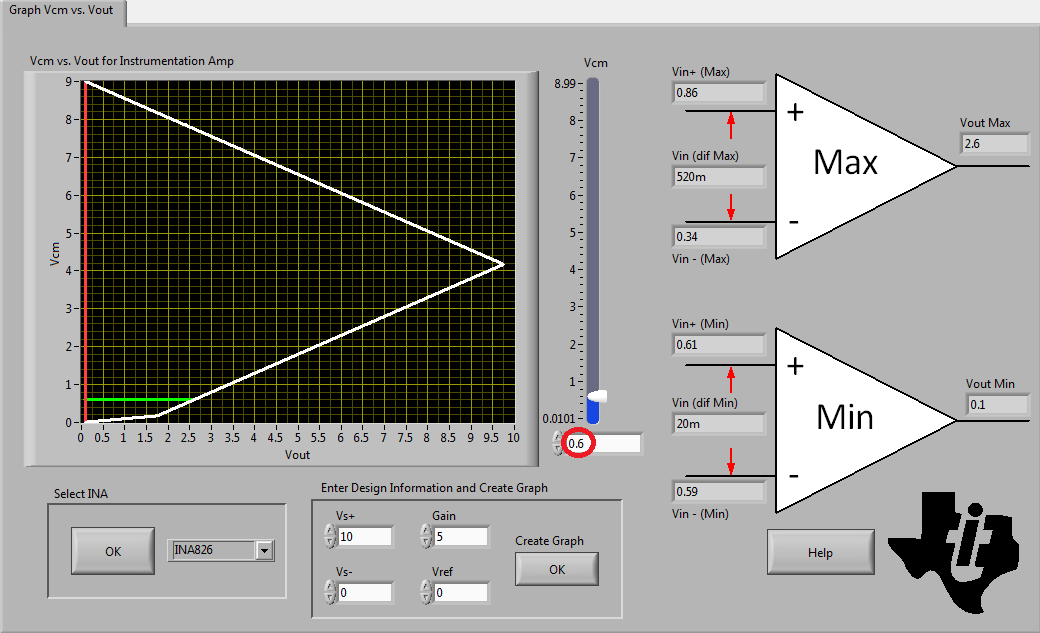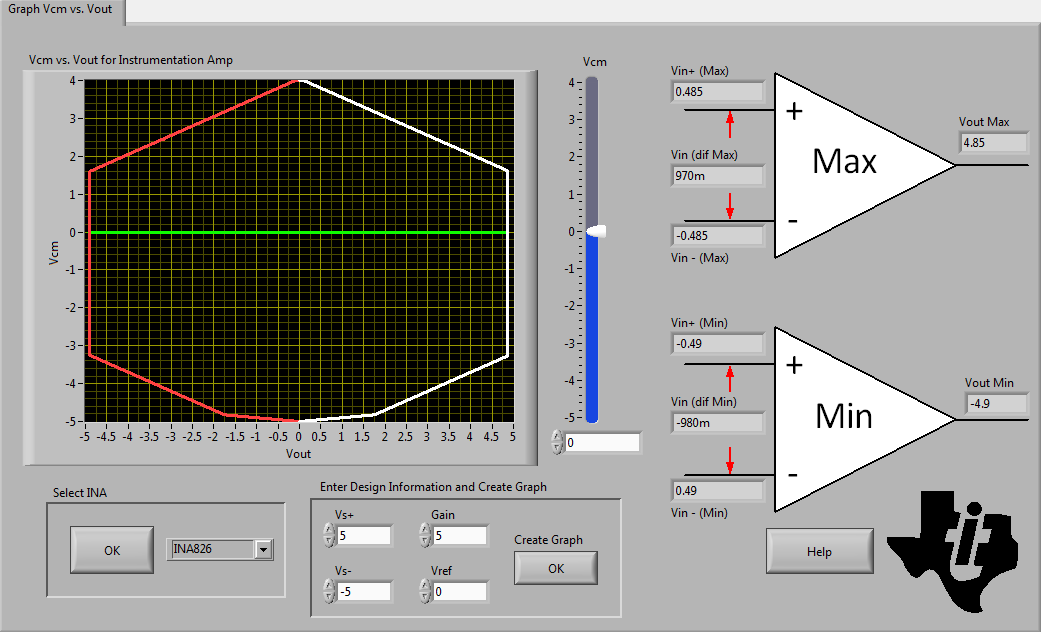Other Parts Discussed in Thread: INA826, TINA-TI
Hi,
I have placed Gain resistor on the eval board INA826EVM. But i am not getting output with expected gain. Could some help be please provided if i am doing something not right?
The value i have placed on the eval board:
Gain resistor Rg = 12.4K (Expected gain 5v/v)
Input resistors R1 = R2 = 100R.
Input capacitors C1 = C3 = 100nF; C2 = 1uF.
Output resistor Ro = 100R
Capacitor C0 = 1nF.
Ref shorted to Ground i.e. R5 = 0R.
I am providing input 0.516V dc and expecting output 5*0.516V = 2.58V. But the output i am getting is only 2.27V which signifies gain of 4.29V/V only.
Thanks.


